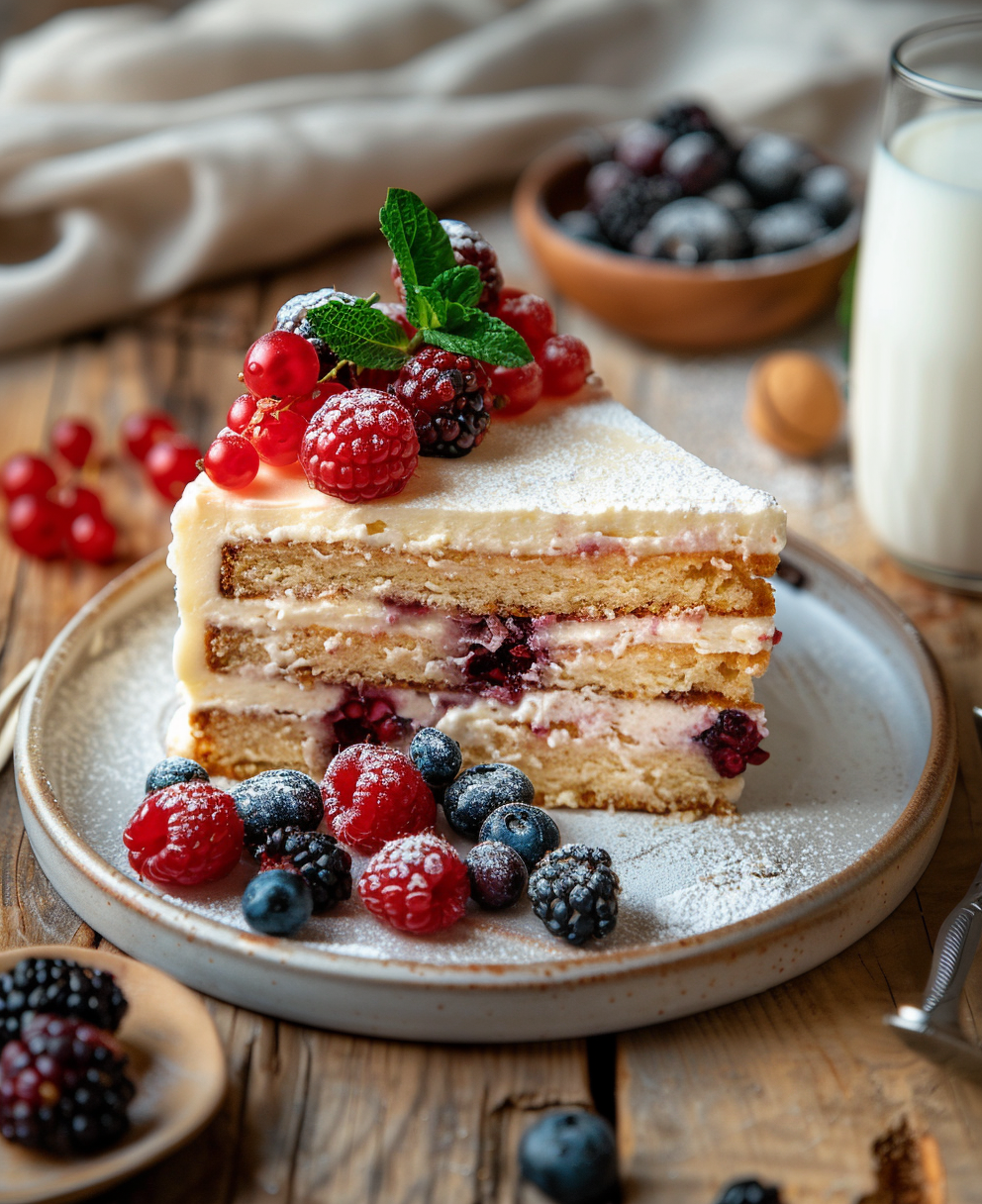
Why Naked Wedding Cakes Are Winning Hearts
A few years ago, I attended a wedding where the cake stole the show. It wasn’t covered in fondant or dripping with elaborate decorations. Instead, it had a simple, rustic charm that made everyone pause and admire it. The layers were exposed, showing off the soft vanilla sponge, and just a hint of frosting held it all together. That was my first encounter with a naked wedding cake, and I’ve been fascinated ever since.
This trend has quietly taken the wedding world by storm. More couples are choosing this minimalist style for their big day, and it’s easy to see why. When Angelina Jolie showcased her exposed wedding cake at her intimate wedding, people couldn’t stop talking about its understated elegance. It proved that sometimes, less truly is more.
What Makes a Naked Wedding Cake Special?
If you’re new to the idea, a naked wedding cake is exactly what it sounds like—a cake without a full coat of frosting. Instead of hiding the layers beneath a thick layer of icing, the cake shows off its natural beauty. Thin layers of buttercream or cream cheese frosting are often used between the tiers, but the sides remain mostly bare. This gives the cake a raw, organic look that feels both modern and timeless.
Unlike traditional cakes smothered in fondant, a rough icing wedding cake embraces imperfections. The exposed layers create texture, while the minimal frosting adds just enough sweetness. This design works perfectly for couples who want something simple yet striking. Plus, it pairs beautifully with fresh flowers, berries, or greenery for decoration.
Why Are Naked Wedding Cakes So Popular Today?
The rise of rustic wedding cakes isn’t just about looks—it’s also about lifestyle. Modern couples are leaning toward authenticity and simplicity, and this trend reflects those values. Here’s why so many are saying yes to the unfrosted cake recipe:
- It’s budget-friendly: Without fancy fondant or intricate designs, these cakes often cost less than their fully frosted counterparts.
- It’s customizable: From flavors to toppings, you can tailor the cake to match your theme or taste.
- It’s Instagram-worthy: The natural textures and seasonal decor make it a favorite for photos.
And let’s not forget the practical side. A half-dressed cake recipe lets you focus on flavor instead of spending hours perfecting the outside. After all, shouldn’t the cake taste as good as it looks?
Perfect for Every Theme
One reason I love naked wedding cakes is how versatile they are. Whether you’re planning a spring wedding filled with pastel blooms or a bohemian celebration under string lights, this style fits right in. Its earthy vibe complements wooden accents, wildflowers, and even vintage lace. For a touch of glamour, add metallic wedding cake toppers or cascading fruit.
I once helped a friend decorate her rustic wedding cake with fresh figs and rosemary sprigs. It smelled amazing and looked like it belonged in a magazine. Another couple opted for a vanilla wedding cake recipe topped with lavender buds—a nod to their shared love of gardening. These personal touches turn a simple cake into a centerpiece that tells your story.
The Beauty of Simplicity
There’s something magical about the way a naked wedding cake celebrates simplicity. It doesn’t try too hard to impress; it just is. And in a world that often feels chaotic, there’s comfort in that. Bakers appreciate it too because it allows them to highlight their skill in creating moist, flavorful layers without worrying about covering mistakes.
For anyone wondering how to make a rustic wedding cake, here’s my advice: start with quality ingredients. Use real butter, farm-fresh eggs, and pure vanilla extract. Choose seasonal fruits or edible flowers for garnish. Keep the design clean and let the cake speak for itself. Trust me—it will shine.
In the end, whether you go for a classic angelina jolie wedding cake style or put your own spin on it, one thing is certain. A naked wedding cake isn’t just dessert—it’s an experience. And when done right, it becomes a memory your guests will savor long after the last slice is gone.
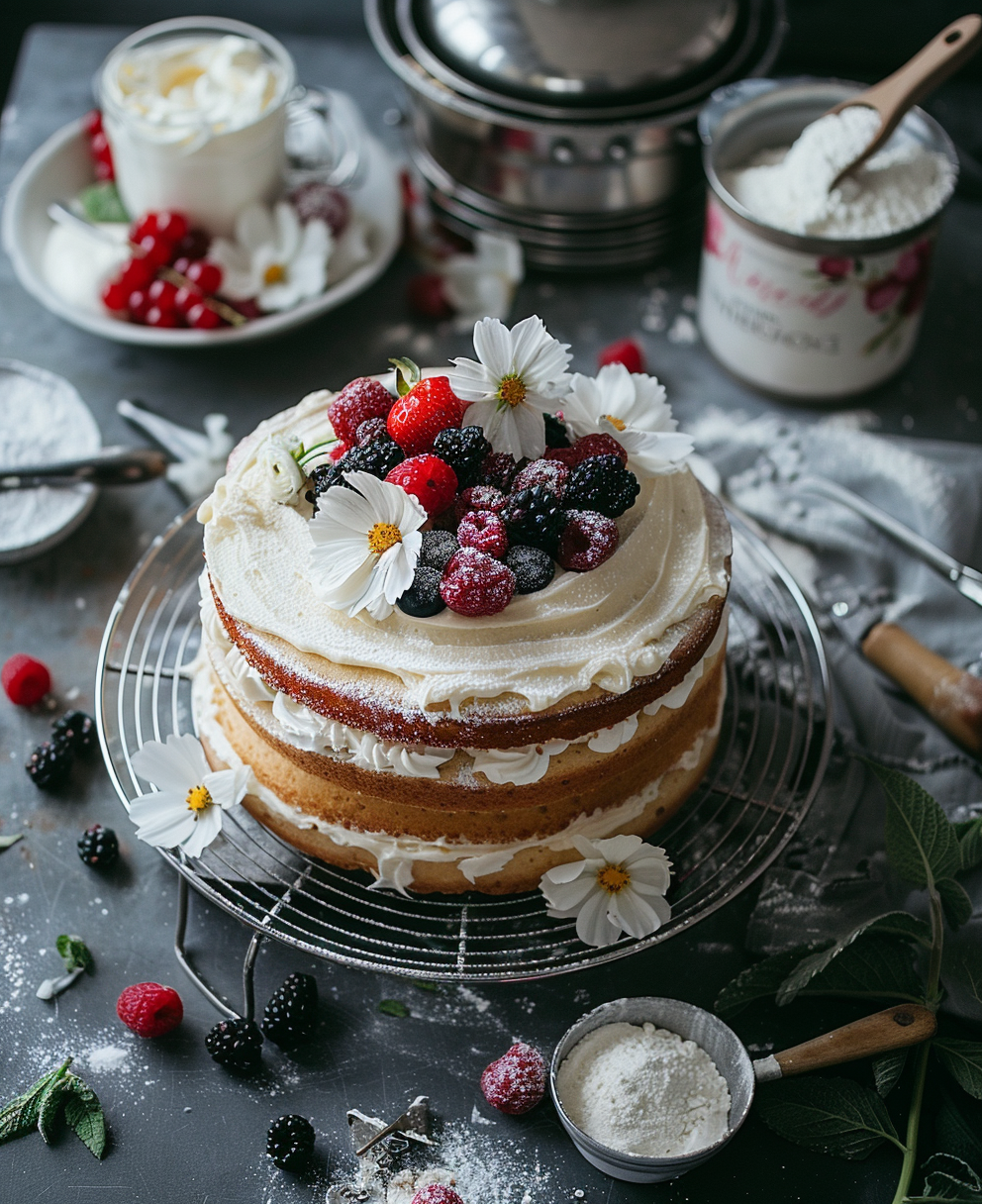
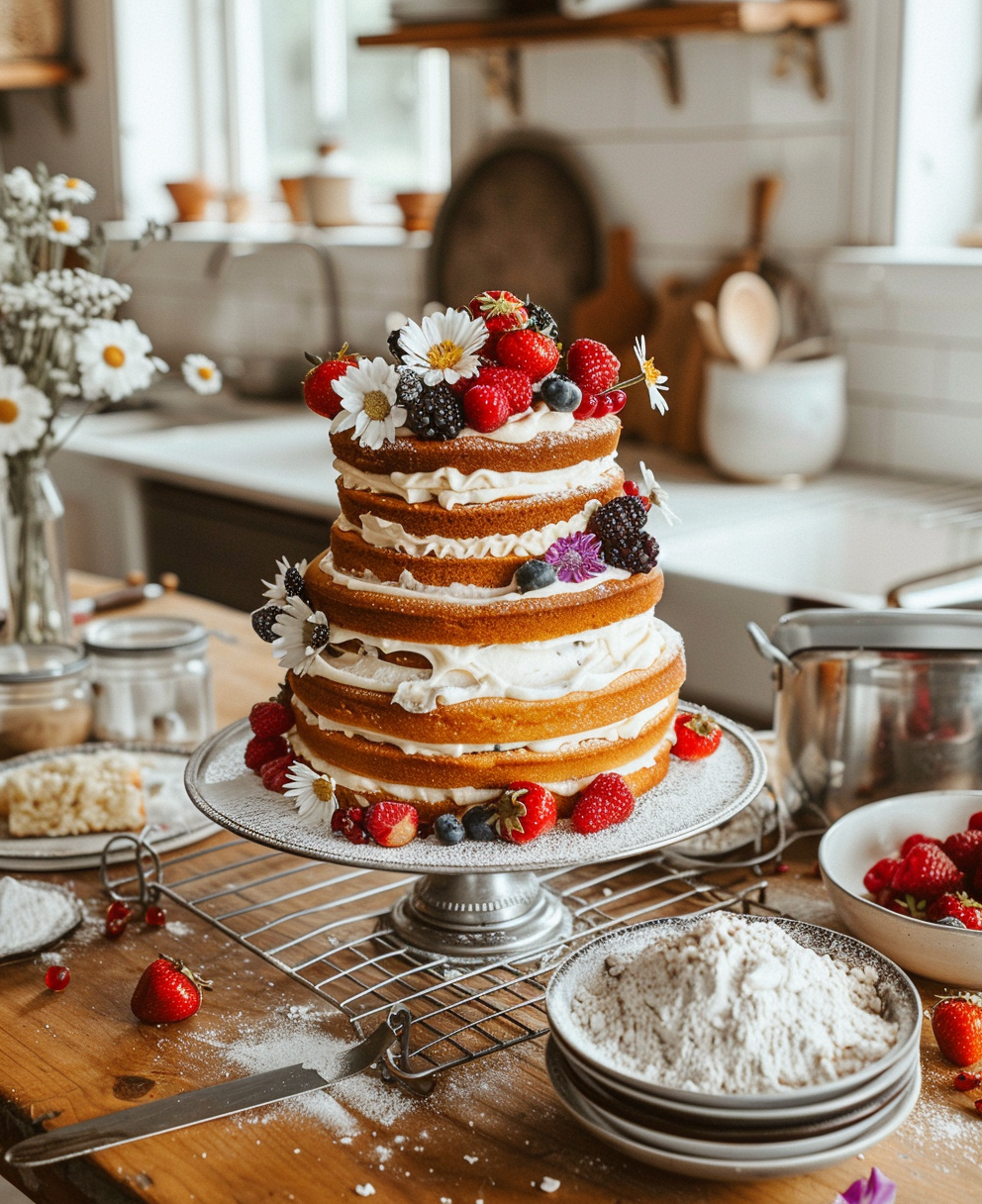
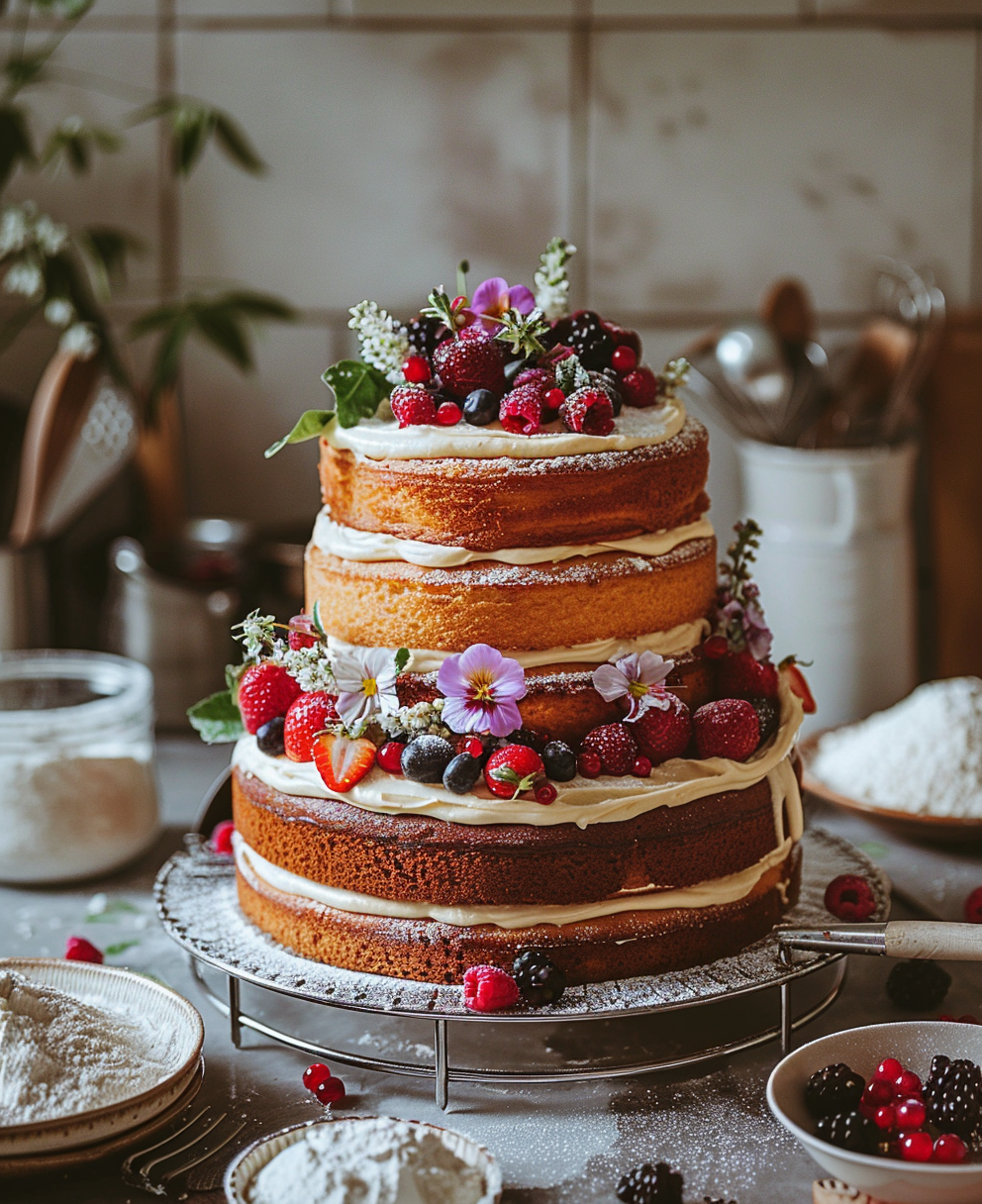
How to Make Your Own Naked Wedding Cake
Alright, let’s get into the fun part—making your own naked wedding cake. If you’ve ever thought, “Can I really pull this off at home?” the answer is a big yes. Trust me, I was skeptical too until I tried it for my cousin’s backyard vow renewal. Spoiler alert: It turned out better than I expected, and yours can too.
We’ll start with a solid foundation—a classic vanilla wedding cake recipe. Why vanilla? Because it’s versatile, crowd-pleasing, and pairs beautifully with almost any filling or topping. Plus, it’s beginner-friendly. Once we’ve got the base down, I’ll walk you through how to achieve that signature rustic look using a half-dressed cake recipe approach. Ready? Let’s dive in.
The Perfect Vanilla Base
Here’s the thing about a naked wedding cake: since there’s no heavy frosting to hide behind, your layers need to be moist and flavorful. This is where quality ingredients come into play. Use real butter, farm-fresh eggs, and pure vanilla extract. Don’t skimp here—it makes all the difference.
For a three-tiered cake (which serves around 20-25 guests), you’ll need:
- 4 cups of all-purpose flour
- 3 cups of sugar
- 1 tablespoon baking powder
- 1 teaspoon salt
- 1 cup unsalted butter, softened
- 1 cup whole milk
- 4 large eggs
- 2 teaspoons vanilla extract
Preheat your oven to 350°F and grease your pans—I recommend using 8-inch round cake pans for even layers. Cream the butter and sugar together until light and fluffy, then beat in the eggs one at a time. Alternate adding the dry ingredients and milk, starting and ending with the flour mixture. Finally, fold in the vanilla. Divide the batter evenly among the pans and bake for about 25-30 minutes. Cool completely before assembling.
Achieving the Rustic Look
Now comes the fun part—the frosting technique. Unlike traditional cakes smothered in fondant, a rough icing wedding cake embraces imperfections. The key is to spread just enough frosting between the layers to hold them together while leaving the sides mostly bare.
For the frosting, I love using a simple Swiss meringue buttercream. It’s silky smooth and not overly sweet, which lets the cake flavors shine. Spread a thin layer on top of each tier, then stack them carefully. For the sides, take an offset spatula and lightly swipe the frosting in upward strokes. You want it to look intentional but effortless—not perfectly smooth. Think of it as giving the cake a gentle hug rather than a full coat of armor.
By the way, if you’re wondering how to frost a cake to achieve that rough finish, practice makes perfect. Start with small sections and go slow. Remember, the goal isn’t perfection; it’s personality.
Tips for Polished Simplicity
One rookie mistake I made early on was overthinking the design. A half-dressed cake recipe doesn’t need much fuss. To keep things looking polished yet natural, chill the assembled cake in the fridge for 15-20 minutes before adding final touches. This helps set the frosting so it stays put during transport.
Funny enough, I once forgot to chill a cake I made, and by the time it reached the venue, the frosting had shifted slightly. Lesson learned: patience pays off. Another pro tip? Dust the edges with powdered sugar for a soft, dreamy effect. Just don’t overdo it—you want it to feel like a whisper, not a shout.
Rustic Wedding Cake Recipe Ideas
Let’s talk flavor combos. While a vanilla wedding cake recipe is always a winner, there are plenty of other options that work beautifully with the naked style. One of my favorites is a lemon-lavender combo inspired by the limoncello mascarpone cake. The zesty brightness of lemon paired with floral notes of lavender creates a sophisticated twist.
If citrus isn’t your jam, try a chocolate-hazelnut variation. Picture rich chocolate layers filled with hazelnut cream—it’s indulgent without being overwhelming. Or, for something truly unique, consider a mango mousse filling. I recently stumbled upon this idea when experimenting with a mango mousse cake, and wow, did it impress my taste testers. The tropical vibe would be perfect for a summer celebration.
Here’s a quick rundown of some foolproof flavor pairings:
- Lemon + Blueberry: Bright and refreshing, ideal for spring weddings.
- Chocolate + Raspberry: Classic yet bold, great for fall events.
- Vanilla + Passionfruit: Sweet meets tangy, perfect for destination nuptials.
- Coconut + Pineapple: Tropical bliss that screams beachside vows.
And remember, simplicity is key. Stick to two or three complementary flavors max. Too many elements can muddy the overall taste experience.
What Flavors Work Best?
When choosing flavors for a naked wedding cake, think about what resonates with you as a couple. Are you both coffee lovers? Go for a mocha-infused sponge. Love fruit? Try a berry compote filling. The beauty of an unfrosted cake recipe lies in its ability to showcase these flavors without competing textures.
Decorating Tips for Naked Wedding Cakes
Okay, now let’s chat decor. Decorating a rustic wedding cake should feel like curating a mood board rather than crafting a masterpiece. Keep it minimal but meaningful. Fresh fruits, edible flowers, and herbs are fantastic choices because they add color and fragrance without overshadowing the cake itself.
Seasonality plays a huge role here. For a spring wedding, strawberries, peaches, and lilacs create a vibrant palette. In autumn, figs, pomegranates, and rosemary sprigs bring warmth and depth. Funny story—I once decorated a cake with fresh blackberries and thyme for a November wedding. Guests kept asking if it was store-bought because it looked so polished!
Another trick? Incorporate wedding cake toppers that reflect your personalities. Whether it’s a vintage-inspired monogram or a quirky figurine, these little details can elevate the entire presentation. Take inspiration from the Angelina Jolie wedding cake, which featured delicate lace accents. You could mimic that look by draping edible lace ribbons along the tiers.
Lastly, don’t underestimate the power of height. Stack your tiers on wooden risers or cake stands to give your creation more presence. And hey, if you’re feeling adventurous, check out cake in a jar recipes for cute favors that tie back to your main dessert.
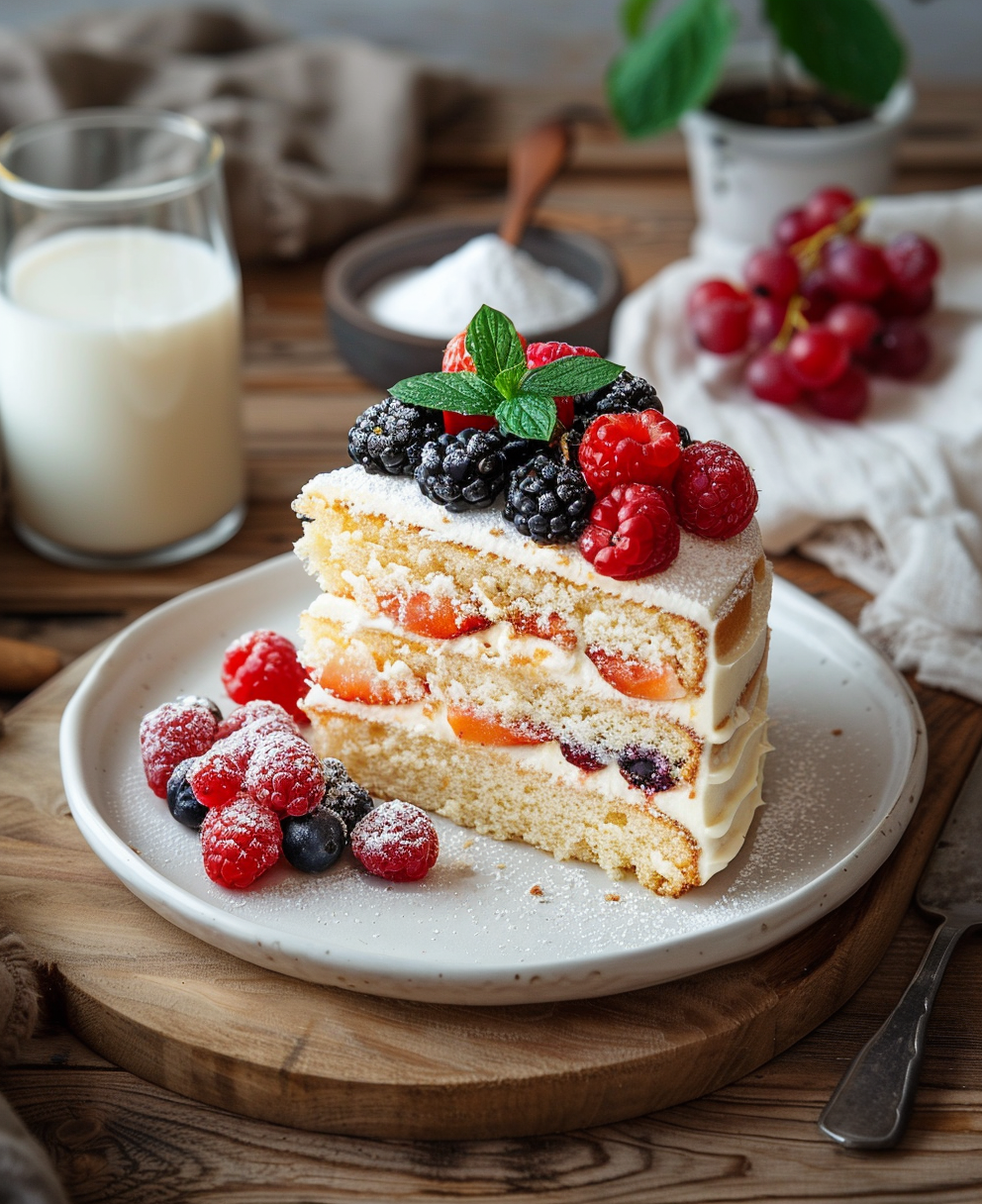
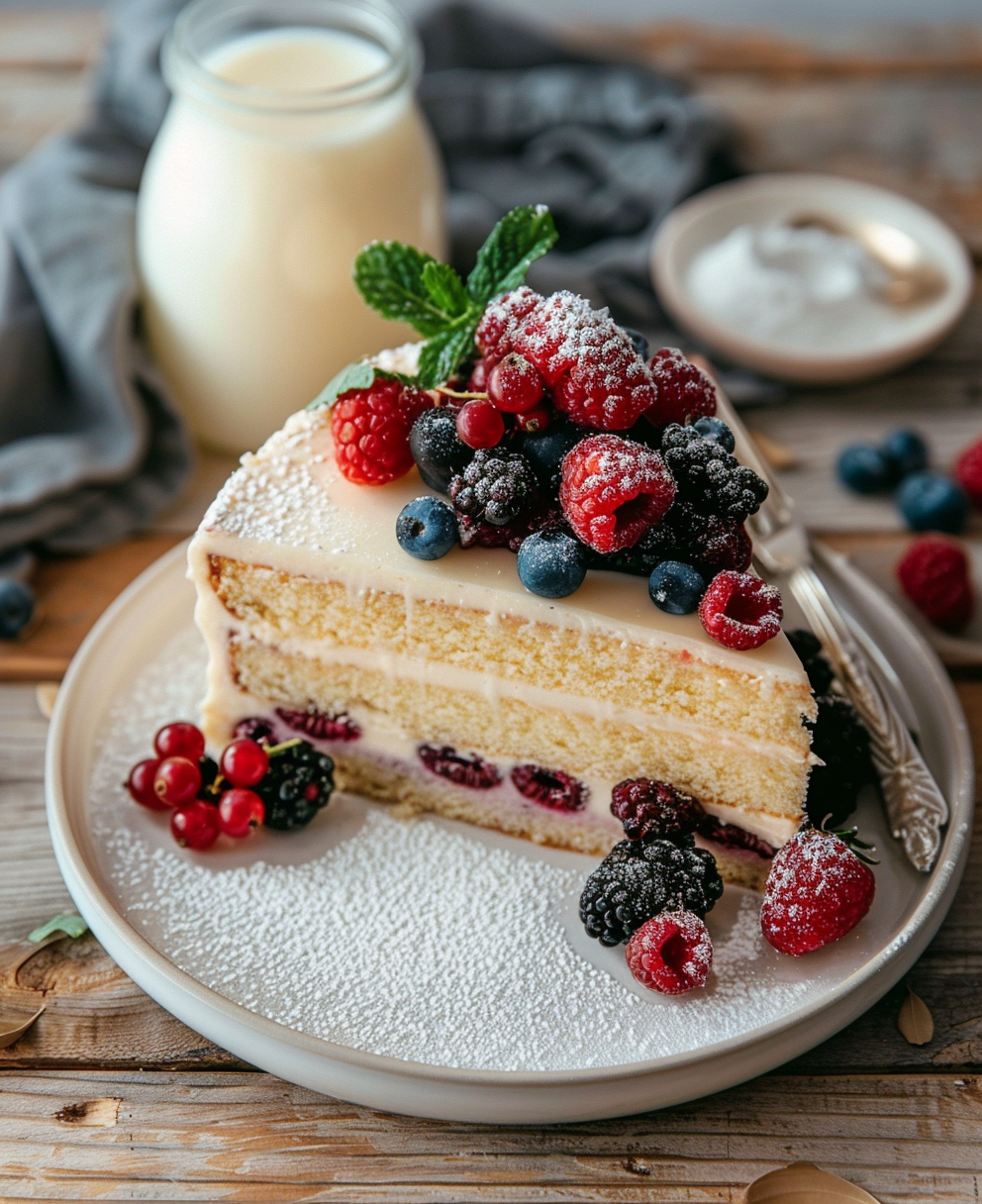
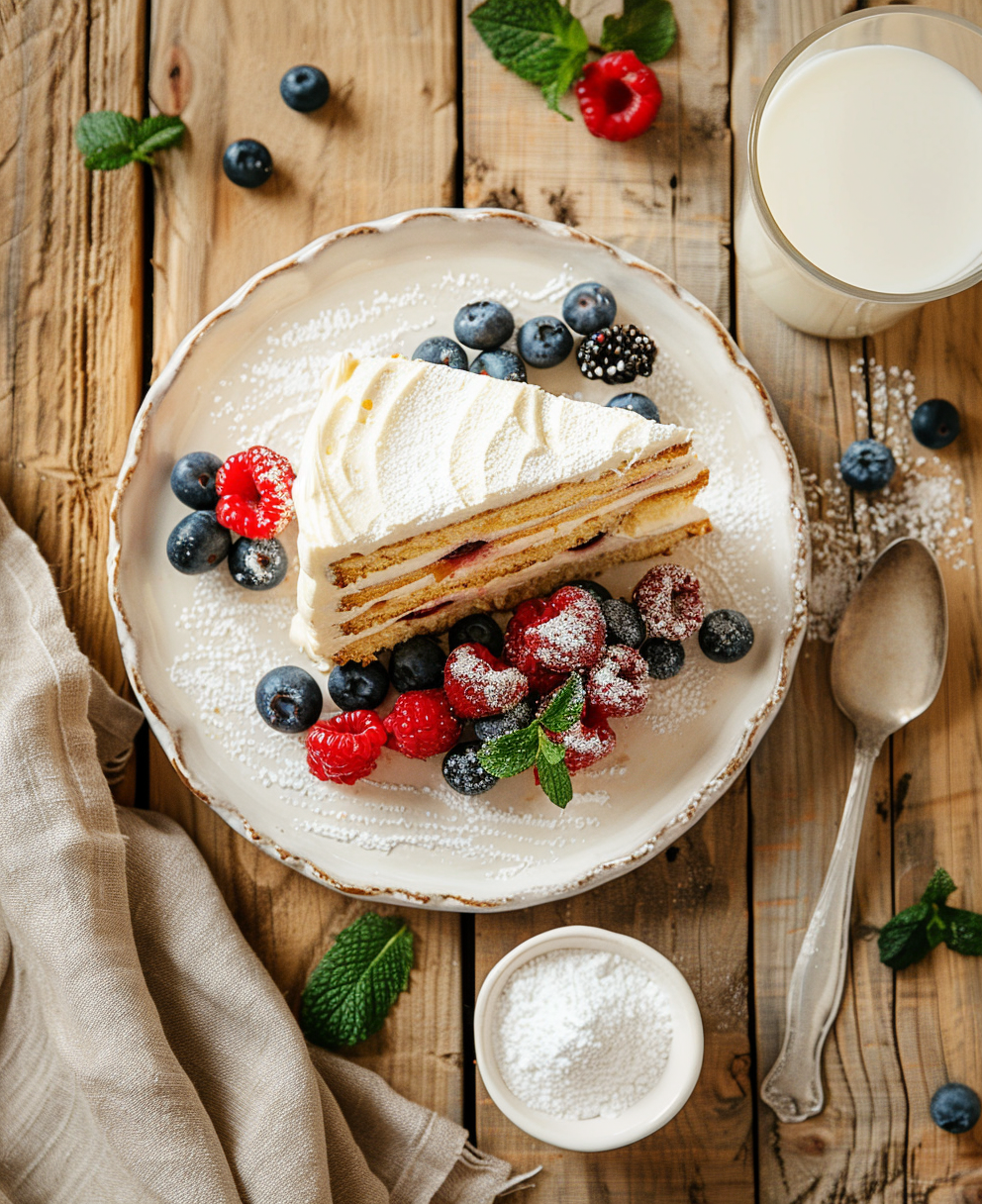
Common Mistakes to Avoid When Making a Naked Wedding Cake
Let’s be real—DIY projects can feel like a rollercoaster. One minute you’re riding high, and the next, you’re wondering why you didn’t just hire someone. When it comes to making your own naked wedding cake, there are a few pitfalls you’ll want to steer clear of. Trust me, I’ve been there.
One big no-no? Over-baking your layers. Here’s the thing: since a naked wedding cake doesn’t have that thick layer of frosting to hide behind, dry or crumbly layers will stick out like a sore thumb. Aim for moist, tender sponges every time. If you’re worried about overdoing it, check your cakes a few minutes before the timer goes off. A toothpick should come out clean but not bone-dry.
On the flip side, don’t skimp on the frosting between the layers. I once made the mistake of using too little buttercream in an effort to keep things “minimal.” By the end of the night, my cake was leaning like the Tower of Pisa. Not cute. Spread a generous amount of frosting between tiers to act as glue—it keeps everything stable and tasting great.
Funny enough, transport is another area where things can go sideways. You’d think a half-dressed cake recipe would be easier to move, but those exposed sides are surprisingly delicate. Always chill your cake before transporting it, and use a sturdy cake box or carrier. If you’re driving, place a nonslip mat under the box to prevent sliding. Pro tip: secure the box with bungee cords if you’re going long distances. It sounds extra, but it works.
How Do You Prevent a Naked Wedding Cake from Drying Out?
This question comes up all the time, and for good reason. Without that protective fondant shell, these cakes are more prone to drying out. My secret weapon? Simple syrup. Brushing each layer with a light coat of flavored syrup locks in moisture and adds an extra layer of flavor. For example, try brushing a vanilla-infused syrup onto a vanilla wedding cake recipe. Or, if you’re feeling adventurous, use a citrus-based syrup for something zesty.
Another trick is to wrap your cooled cake layers tightly in plastic wrap and store them in the freezer until assembly day. Yes, freezing! Just make sure to thaw them properly before frosting. This method helps retain moisture and makes the layers easier to handle during stacking.
FAQs About Naked Wedding Cakes
By the way, I get so many questions about naked wedding cakes that I figured it was time to address some of the most common ones here. Whether you’re planning to DIY or hire a pro, these answers might save you a headache—or two.
- Can I order a naked wedding cake from a bakery?
Absolutely! Many bakeries now specialize in rustic wedding cake recipes. Just bring plenty of pictures and details about your theme so they can nail the design. Keep in mind, though, custom orders often require advance notice. - Is a naked wedding cake less expensive than traditional ones?
In most cases, yes. Since it skips elaborate fondant work, labor costs tend to be lower. However, pricing varies based on size, flavors, and decorations. Fresh flowers or specialty fillings can add up quickly. - How far in advance can I bake a naked wedding cake?
You can bake the layers up to a week ahead if stored properly in the freezer. Assemble and frost the cake no more than 1-2 days before the event to ensure freshness. - What kind of frosting works best for a rough icing wedding cake?
Swiss meringue buttercream is a favorite because it’s smooth yet sturdy. Cream cheese frosting also pairs beautifully with fruity fillings. - Do I need special tools to create this look?
Not really. An offset spatula is helpful for spreading frosting unevenly, but otherwise, basic kitchen tools will do the job. - Can I freeze leftover slices?
Yep! Wrap individual slices in plastic wrap and then foil. They’ll stay fresh in the freezer for up to three months. - Are naked wedding cakes suitable for outdoor events?
They can be, but take precautions. Avoid direct sunlight, and consider refrigerating the cake until shortly before serving. - Should I use artificial or fresh flowers for decoration?
Fresh flowers look stunning, but only use edible varieties (like roses or pansies). Artificial flowers are fine as long as they’re food-safe and not sprayed with chemicals. - Can I incorporate non-traditional elements like fruit?
Definitely! Berries, figs, and even citrus slices are gorgeous additions. Check out creative cake ideas for inspiration. - How do I choose the right size?
Estimate about 1 slice per guest, assuming standard portions. For larger crowds, consider adding a sheet cake in the back to supplement servings.
A Final Thought on Naked Wedding Cakes
After spending hours researching, baking, and decorating, I’ve come to realize that a naked wedding cake isn’t just a dessert—it’s a reflection of personality and style. Whether you decide to tackle it yourself or leave it to the pros, embrace the process. These cakes celebrate authenticity, and that’s something worth savoring.
Here’s my parting advice: focus on what matters most to you as a couple. Maybe it’s the flavor combo that reminds you of your first date, or the wildflowers you picked together last summer. Whatever it is, let it shine through. And remember, even if things don’t turn out perfectly, your love story is the real centerpiece.
FAQ Block
- Q: Can I order a naked wedding cake from a bakery?
A: Yes, many bakeries offer this style. Provide clear instructions and visuals to ensure they meet your expectations. - Q: Is a naked wedding cake less expensive than traditional ones?
A: Generally, yes. The lack of fondant reduces labor costs, though specialty ingredients may increase the price. - Q: How far in advance can I bake a naked wedding cake?
A: Layers can be baked and frozen up to a week ahead; assemble 1-2 days prior to the event. - Q: What kind of frosting works best for a rough icing wedding cake?
A: Swiss meringue buttercream or cream cheese frosting are excellent choices for texture and taste. - Q: Do I need special tools to create this look?
A: Basic tools suffice, though an offset spatula helps achieve the rustic finish. - Q: Can I freeze leftover slices?
A: Yes, wrap slices well and freeze for up to three months. - Q: Are naked wedding cakes suitable for outdoor events?
A: With proper care, such as shade and timely setup, they work beautifully outdoors. - Q: Should I use artificial or fresh flowers for decoration?
A: Use edible flowers or ensure artificial ones are food-safe and chemical-free. - Q: Can I incorporate non-traditional elements like fruit?
A: Absolutely! Seasonal fruits add color and flavor. Explore creative options online. - Q: How do I choose the right size?
A: Plan for one slice per guest, adjusting for larger groups with supplemental sheet cakes.

Equipment
- 8-inch round cake pans
- Mixing bowls
- Electric mixer
- Measuring cups and spoons
- Offset spatula
Ingredients
- 4 cups all-purpose flour
- 3 cups sugar
- 1 tablespoon baking powder
- 1 teaspoon salt
- 1 cup unsalted butter, softened
- 1 cup whole milk
- 4 large eggs
- 2 teaspoons vanilla extract
Instructions
- Preheat your oven to 350°F and grease your 8-inch round cake pans.
- Cream the butter and sugar together until light and fluffy.
- Beat in the eggs one at a time.
- Alternate adding the dry ingredients (flour, baking powder, salt) and milk, starting and ending with the flour mixture.
- Fold in the vanilla.
- Divide the batter evenly among the prepared pans.
- Bake for about 25-30 minutes or until a toothpick comes out clean.
- Cool completely before assembling.
